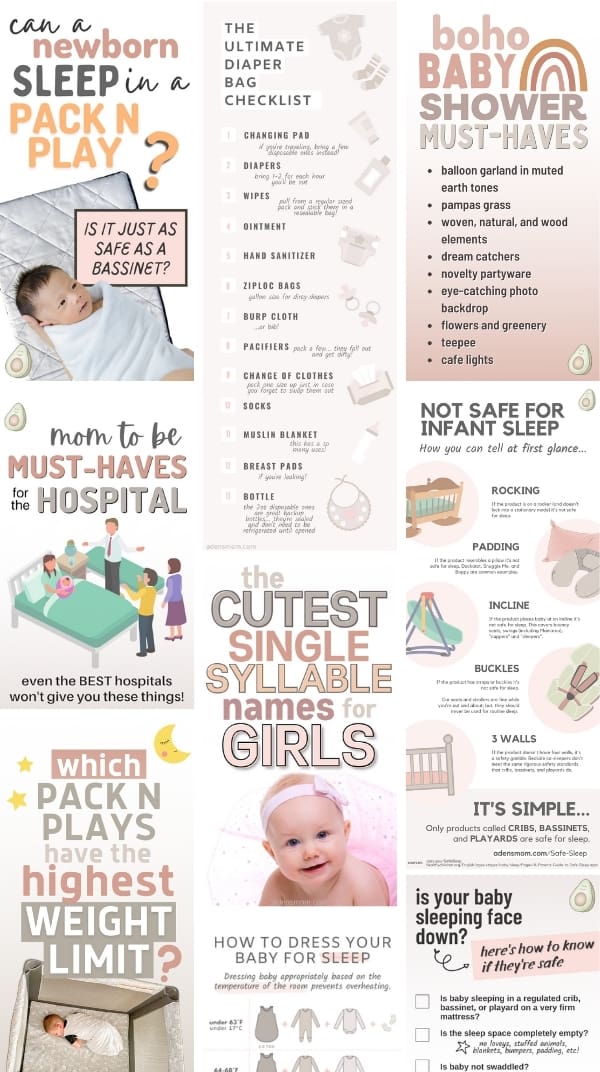Let’s talk about how you can reduce the risk of SIDS by following the ABCs of safe sleep.
Sudden Infant Death Syndrome (SIDS) is the leading cause of death for healthy, full-term babies.
When you’re a new or expectant parent, this is an intolerable thought. It’s hard to even go there in your mind.
The good news is that preventing SIDS (and sleep-related deaths often classified as SIDS) is largely in our control.
Certainly, it’s not as mysterious or random as I once thought it was.
By doing the very simple things that I’m about to list below, we as caregivers can render the risk of sleep-related death extremely low.
Links to evidence-based sources are provided throughout this post.
Overview of the ABC’s of safe sleep:
A – Alone – no people, blankets, or objects in the sleep space
B – Back – baby should be put down to sleep on his back, never on his belly or side
C – Crib – a regulated crib, bassinet, or play yard
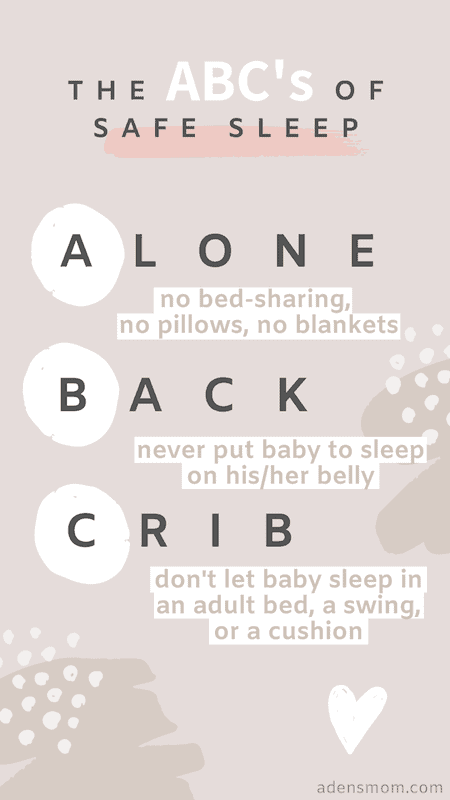
Let’s take an in-depth look at the ABCs of safe sleep to protect your baby from SIDS…
When we talk about the ABCs of safe sleep, we are talking about ALL sleep periods.
Supervised naps too.
SIDS is a silent killer and can happen in only a minute.
(More on this in the FAQs. Right now let’s focus on best practices.)
Thankfully, following the ABCs is simple…
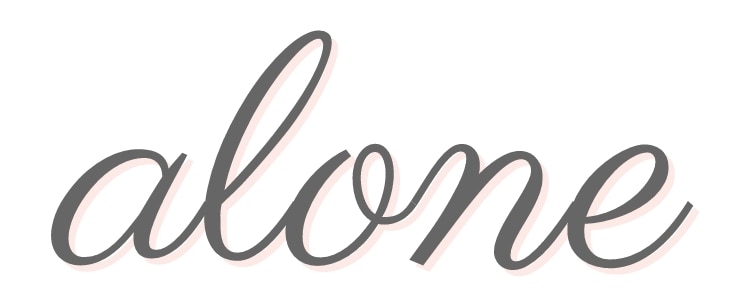
What this means you should do:
- Give baby his own sleep space.
- Make sure that the sleep space is 100% clear of blankets, pillows, stuffed animals, bumpers, rail covers, etc. The crib/bassinet should be completely empty with just a fitted sheet.
What this means you should NOT do:
- Under no circumstances should your baby sleep in the same bed as another person, including a parent or sibling.
- Do not try to make the crib/bassinet more comfortable by adding blankets or padding. Infant mattresses are intentionally firm to reduce the risk of suffocation and re-breathing of CO2.
- Do not give an infant a lovey to sleep with.
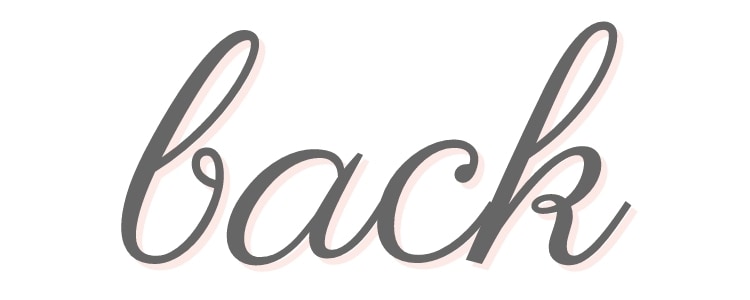
What this means you should do:
- When you put your baby to sleep, always place him flat on his back. (This is also called “supine”).
What this means you should NOT do:
- Never put baby to sleep on his stomach or side, even if he knows how to roll.
- Never allow baby to sleep in a seated or inclined position due to the risk of positional asphyxiation.*
*Read the FAQs at the end for more on this.
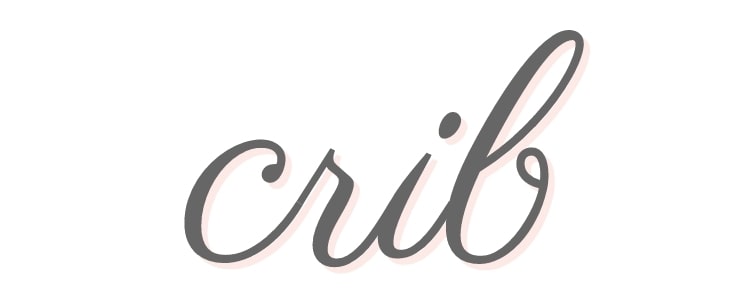
What this means you should do:
- There are only 3 product categories that undergo mandatory safety testing for infant sleep: Crib, Bassinet, Play Yard. These are regulated terms. Your baby should sleep in a product that is specifically called one of these 3 names.
What this means you should NOT do:
- Even if you are supervising, it is unsafe for your baby to sleep in a swing, in a bouncy chair, on any sort of cushion such as a Boppy, Snuggle Me Organic, or DockATot, on a couch, or an adult bed. (This list is not exhaustive).
Sources: HealthyChildren (AAP), NICHD, CPSC
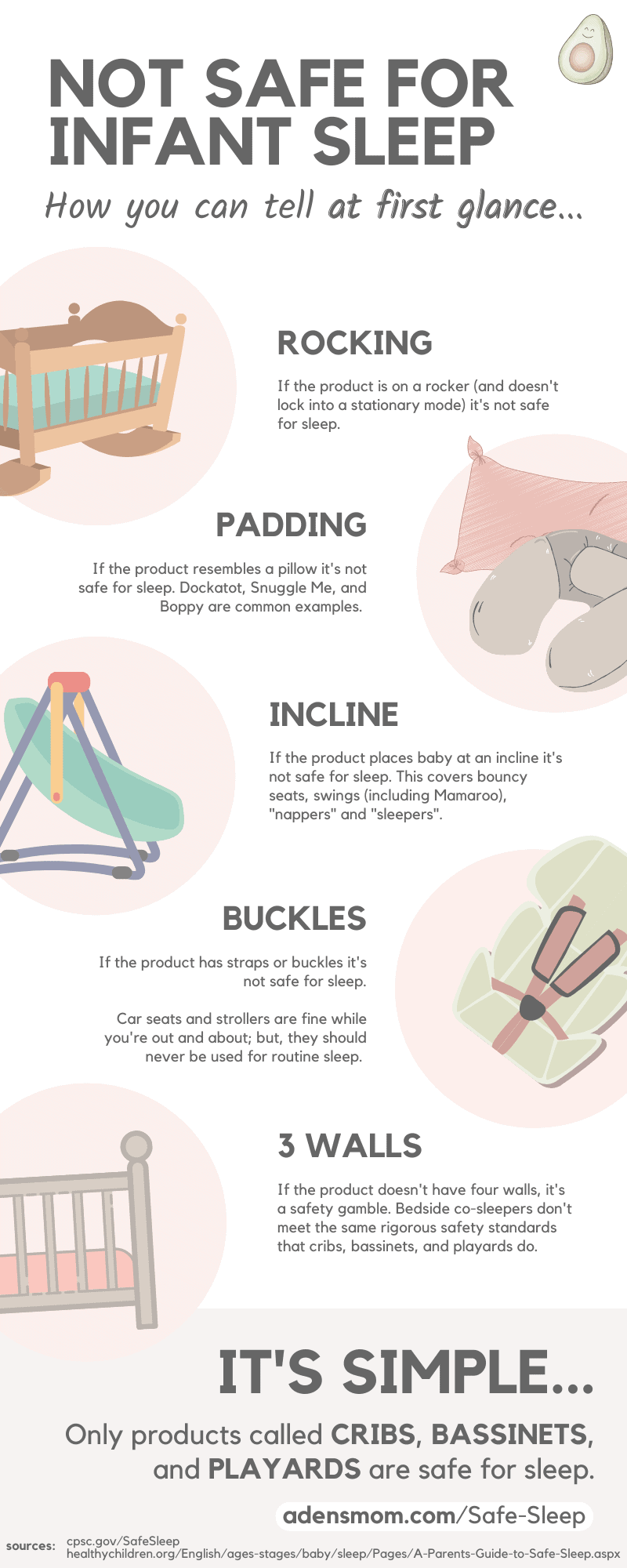
Tips for implementing the ABCs of safe sleep…
 Make sure you have at least one safe sleep space in the house.
Make sure you have at least one safe sleep space in the house.
Don’t buy (or register for) anything inherently unsafe such as a co-sleeper with only 3 walls.
 Consider purchasing or registering for a second safe sleep space if it’s within your means.
Consider purchasing or registering for a second safe sleep space if it’s within your means.
If you have multiple floors or live in a big place, it’s nice to have another safe spot to lay your baby down to sleep.
Some families use a bassinet/crib upstairs and a play yard downstairs.
Related: Can newborns sleep in Pack N Plays?
 Establish good habits from the start so you don’t have to break bad habits later.
Establish good habits from the start so you don’t have to break bad habits later.
It’s much easier to implement best practices if you and your baby have never known anything different.
 Be mentally prepared that in a state of exhaustion, you’re going to be tempted to do something unsafe “just one time” — but that all it takes for a tragedy to occur is just one time.
Be mentally prepared that in a state of exhaustion, you’re going to be tempted to do something unsafe “just one time” — but that all it takes for a tragedy to occur is just one time.
 Make sure all caretakers (parents, grandparents, daycare, nannies, etc.) are on board with the ABCs of safe sleep.
Make sure all caretakers (parents, grandparents, daycare, nannies, etc.) are on board with the ABCs of safe sleep.
If they don’t understand the risks of unsafe sleep, send them a link to this post or any of the evidence-based resources I’ve linked to.
Click here to email this article.
Next, we’ll talk about the good news and the bad news about the safe sleep ABCs. And finally, we’ll get to the FAQs.
The good news and the bad news…
The good news is that this is as simple as it looks.
The bad news is that parents screw this up all the time because…
- They assume that there is a proactive agency that checks the safety of products on the market. (There’s not).
- They’re understandably confused by the zillion products sold for infant sleep.
- They’re utterly sleep-deprived during the newborn phase and will do anything to help their baby sleep better.
- This isn’t what they see on social media.
- They didn’t follow these rules with their other kids who are alive and well.
- Their parents didn’t follow these rules with them.
- Understanding risk factors related to SIDS is a genuinely complex and non-intuitive thing to do.
Unfortunately, not a single one of these reasons changes the overwhelming consensus among doctors and researchers:
Following the ABCs of safe sleep significantly reduces the risk of Sudden Infant Death Syndrome and sleep-related infant death.
Related: Are Nested Bean Sleep Sacks Safe?
Frequently Asked Questions (FAQs) about the safe sleep ABC’s
How can I tell if a product is safe for my baby to sleep in?
Here’s the simple and all-encompassing answer:
If the product is a “Crib,” “Bassinet,” or “Play Yard” then it is safe for sleep.
Products must meet federal safety standards in order to be sold under those names.
NOTE: It must be called a crib, bassinet, or play yard in the user manual (not just the sales description).
If it is not called one of those 3 names, it is not safe for sleep, including naps.
This rules out a considerably large number of products on the market.
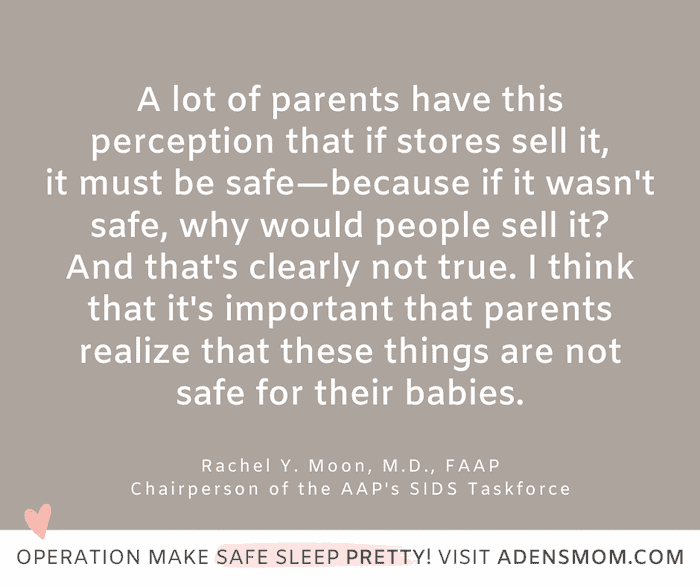
Here are a few “hints” to make it easy to spot an unsafe sleep space:
- If the product has any sort of straps or buckles it’s an automatic indicator that it’s not safe for sleep.
- If the product doesn’t have four walls it’s not safe for sleep.
- If the product resembles a pillow it’s not safe for sleep.
- If the product places baby at an incline it’s not safe for sleep.
- If the product is on a rocker (and doesn’t lock) it’s not safe for sleep.
- If the product is called a sleeper, napper, lounger, bouncer, seat, nest, or swing, it’s not safe for sleep. (List not exhaustive).
It bears repeating that the easiest and simplest thing to do is just find out if the product is called a “Crib,” “Bassinet,” or “Play yard.”
Related: How to pick between a bassinet vs Pack ‘n Play for your baby
My baby doesn't like to sleep in his crib/bassinet. What can I do?
Every parent wants to know how to get their baby to sleep in a bassinet.
The first thing to do is check your mindset. Here’s what I mean:
If your baby cries every time you put him in his car seat, are you going to stop using a car seat? No.
(At least I hope not).
Just like being safely buckled in a car seat, sleeping safely is the only option. Put it out of your mind that there’s anything else to do besides tough it out.
This quote by a father whose baby died from SIDS will hopefully hit home:
“Anyone who has had kids and been up at 3 a.m. and can’t get their babies to sleep knows the challenge of doing this. Safe sleep is hard, but your baby is worth it. You never get over the loss of a child.” –Sam Hanke
Father of Charlie, who died at 3 weeks old due to an unsafe sleep environment
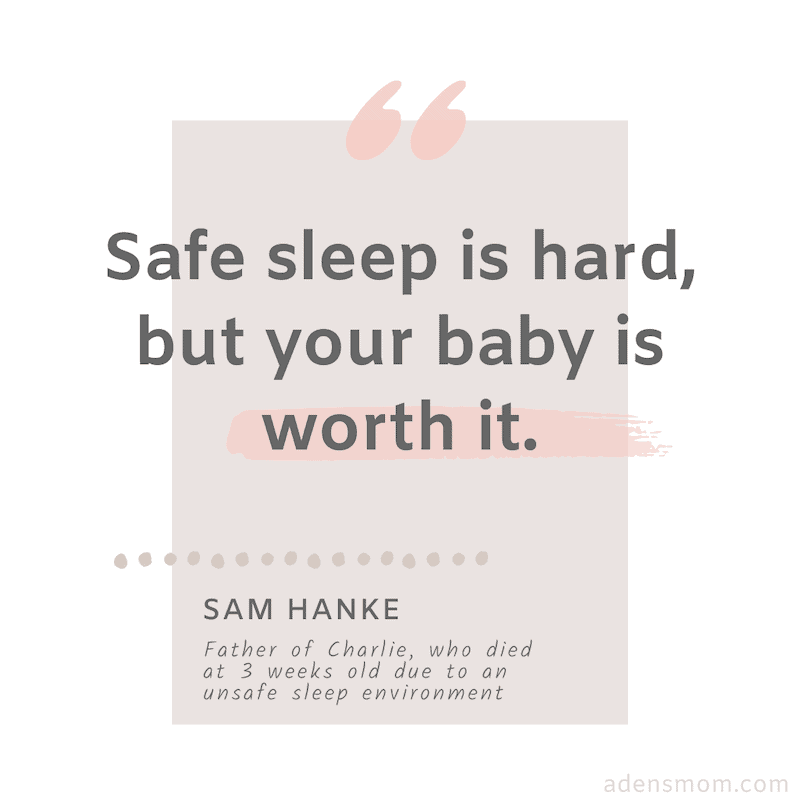
There’s no easy answer here — and whether it makes you feel better or not, “my baby won’t sleep in his bassinet” is an extremely common complaint. You are very much not alone.
Here are a few quick tips to try to get your baby to sleep in his bassinet:
- Loud white noise
- Pitch black room
- Warm the sleep space with a heating pad before putting baby down
- Wear your baby’s sleep sack or swaddle so it smells like you
- A consistent bedtime routine
Ultimately, it’s about time and consistency.
My baby rolled onto his stomach. Do I have to move him to his back?
No. If your baby is able to roll over on his own, you can leave him on his belly — as long as he got there himself — and as long as you’re following the ABCs of safe sleep!
Always start every sleep with your baby on his back, even if you know he’s likely to roll over later.
You can read all about babies rolling over in cribs in this very detailed guide.
Can my baby sleep in his swing / lounger as long as I'm supervising?
Here’s a post all about this: Is the Graco DuoGlider Safe for Sleep?
The short answer is no; it is not safe for your baby to sleep in any type of swing or inclined seat, even if you’re watching.
Supervision isn’t enough because positional asphyxia can be a silent killer.
When babies aren’t getting enough oxygen, it’s not always obvious. There isn’t a fight for life to alert parents that something is wrong.
This is why the AAP wants infants to sleep flat on their backs on a firm surface in a regulated crib, bassinet, or play yard.
Do babies sleep in swings, loungers, and Dockatots all the time and survive? Yes. But have thousands of babies died this way? Also yes.
I will be the first to tell you that I had zero clue about this initially. That’s another story.
Is it safe for me to hold my baby while he's sleeping?
Parents also ask, “Is it safe for baby to sleep on my chest?”
Yes. As long as you are wide awake, it’s fine to hold your sleeping baby. (There are no policy recommendations to indicate otherwise).
Is babywearing safe while my baby is sleeping?
Here’s what the AAP says:
“If an infant falls asleep in a sitting device*, he or she should be removed from the product and moved to a crib or other appropriate flat surface as soon as is safe and practical.”
*The AAP considers a wrap or a sling to be a sitting device in this context.
To babywear safely:
- The infant’s face should be visible with his head above the fabric.
- Make sure his nose and mouth are clear of obstructions.
Is it safe for my baby to sleep in his car seat or stroller?
The same advice applies here as it does to babywearing.
It’s fine if your baby falls asleep in his car seat or stroller while you’re out and about, as long as he is properly buckled.
That said, car seats and strollers should not be used for routine sleep.
The AAP advises to move your baby to a safe sleep space as soon as one is available.
Are baby hammocks a SIDS risk?
Yes, crib hammocks are a known SIDS risk. Baby hammocks are not safe for sleep—no exceptions.
Hammocks do not meet CPSC safety criteria and have not passed testing for infant sleep.
Hammocks are not firm or flat, as all infant sleep spaces should be. They also pose a risk of positional asphyxia.
Nothing should ever be added to your baby’s crib or bassinet, even if it is marketed for baby sleep.
It doesn’t matter if a crib hammock is made out of “breatheable” mesh (just marketing!) or if you know parents whose babies have survived sleeping in a hammock. The bottom line is that baby hammocks are unsafe.
What if my baby spits up / has reflux... will he choke if he's placed on his back to sleep?
Flat on his back is actually the safest position if your baby spits up.
The AAP is clear:
The supine sleep position does not increase the risk of choking and aspiration in infants, even in those with gastroesophageal reflux.
The NICHD/NIH concurs:
“When babies are in the back sleep position, the trachea lies on top of the esophagus. Anything regurgitated or refluxed from the esophagus must work against gravity to be aspirated into the trachea.”
Read more on Page 6.
And from the NICHD’s Safe to Sleep page:
“The number of fatal choking deaths has not increased since back sleeping recommendations began. In most of the few reported cases of fatal choking, an infant was sleeping on his or her stomach.”
It's really hot/cold outside. What should my baby sleep in?
I have an entire post dedicated to this: How to Keep a Baby Warm at Night (Evidence-Based Guide)
You should dress your baby for sleep based on the temperature of the room, not the temperature outside.
According to the AAP,
“In general, infants should be dressed appropriately for the environment, with no greater than 1 layer more than an adult would wear to be comfortable in that environment.”
The Safe to Sleep campaign advises:
“Parents and caregivers should watch for signs of overheating, such as sweating or the baby’s chest feeling hot to the touch.” – NICHD
Here is a useful guide for dressing your baby for sleep. Feel free to share this on social media or save it for future reference!
What is the difference between a swaddle and a sleep sack and are they safe for sleep?
A swaddle contains a baby’s arms and/or compresses his chest. It is no longer safe to swaddle when your baby starts showing signs of rolling.
A sleep sack is a wearable blanket that is safe for all ages and developmental stages.
Read all about sleep sacks vs swaddles here.
When is it safe for my baby to sleep with a blanket?
The earliest age would be 12 months. However, it depends on the model of your crib. Check your user manual to be sure.
We have a beautiful crib/cradle that has been passed down in the family. How can I tell whether it's safe for sleep?
I don’t want to break your heart, but in all likelihood, it’s not safe for sleep.
Check out this PDF from the Consumer Product Safety Commission (CPSC) for a great overview.
Safety standards for cribs have become much more stringent in recent years as a result of infant deaths and injuries.
As of June 28, 2011, cribs are required by law to meet certain safety standards.
Here are a few of the regulations from the CPSC:
- Slat spacing must be less than 2-3/8 inches
- Crib mattresses must snugly fit in the crib without gaps
- NO drop sides
It’s also important to note that there have been many infant deaths associated with cribs that are broken and missing parts — including those that have been fixed.
If you have a family heirloom that you’d like to display in your baby’s nursery, use it for pictures or to store stuffed animals.
Can I add a supplemental mattress to make the Pack N Play / play yard more comfortable?
No.
As you can see for yourself on the giant warning labels on all play yards, supplemental mattresses are unsafe.
The CPSC explains this well:
Play yard mattresses are thin for a reason. The play yard is a flexible structure. Adding extra padding, foam, or mattresses to the play yard can cause babies to suffocate in one of two ways:
1. The baby can get his or her face stuck in the added mattress or other soft items or
2. Because of the extra additions, the flexible sides of the play yard can be pressed out. This creates dangerous and deadly gaps between the side and the added material in which a baby can get trapped.
The AAP also warns that soft mattresses “could create a pocket (or indentation) and increase the chance of rebreathing or suffocation if the infant is placed in or rolls over to the prone position.”
You can read my complete evidence-based guide to safely using a Pack ‘n Play here.
What else can I do to reduce the risk of SIDS?
To be clear, there is no replacement for following the ABC’s of safe sleep. The ABC’s are the foundation of preventing SIDS.
That said, here are 3 additional things you can do to decrease the risk of SIDS.
Note: The protective factors do not stack.
![]() Offering a pacifier for every nap and sleep reduces the risk of SIDS by up to 90%.
Offering a pacifier for every nap and sleep reduces the risk of SIDS by up to 90%.
Scientists are not sure exactly how pacifiers reduce the risk of SIDS. While we have hard data on the effectiveness of pacifiers as a protective factor, the hypothesized mechanisms remain unconfirmed.
It is common for the pacifier to fall from the mouth soon after the infant falls asleep; even so, the protective effect persists throughout the sleep period (and there is no need to replace it).
Pacifiers are safe to leave in the sleep space, but pacifier CLIPS are not.
![]() Breastfeeding reduces the risk of SIDS by up to 50%.
Breastfeeding reduces the risk of SIDS by up to 50%.
Studies show that breastfed infants are more easily woken from sleep than their formula-fed counterparts.
Breastfeeding also decreases incidence of many health issues that are associated with an increased vulnerability to SIDS.
Studies do not distinguish between direct breastfeeding and providing expressed milk.
Always follow safe sleep practices and return baby to his own safe sleep space after breastfeeding.
![]() Room-sharing decreases the risk of SIDS by up to 50%.
Room-sharing decreases the risk of SIDS by up to 50%.
The AAP recommends that infants sleep in the same room as a parent ideally for the first year after birth, but at least for the first 6 months.
Note: Room-sharing and bed-sharing are not the same thing. Bed-sharing is unsafe.
—
AAP is the source for this entire section.

Final thoughts on the ABCs of safe sleep: don’t overcomplicate it
The ABCs of safe sleep are simple to follow. What’s most important is your commitment to following them.
Baby should sleep alone — no objects or people in the sleep space.
Put baby down on his back for every sleep.
Only let baby sleep (naps too!) in a regulated crib, bassinet, or play yard.
If you don’t put your baby to sleep alone on his back in a regulated crib, you are increasing the probability of sleep-related death.
Knowledge is power. Don’t bet your baby’s life on something completely in your control.
Share this post with a friend or save it on Pinterest!
More safe sleep articles
- Safely Using a Pack ‘n Play: The Evidence-Based Guide (Can you add a topper?)
- Snuggle Me Safety: The Evidence-Based Guide (Is it safe for naps?)
- My Baby Can Roll Over… Now What? (What changes for safe sleep—and what doesn’t?)
- Babies chewing on crib: What to do and what NOT to do
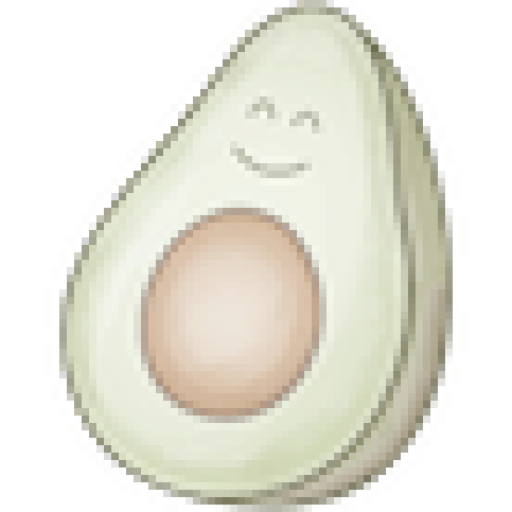
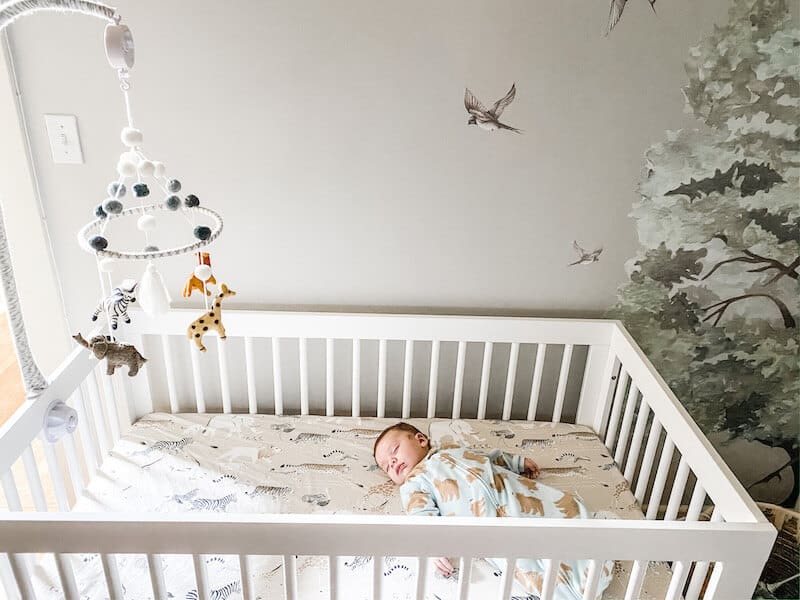
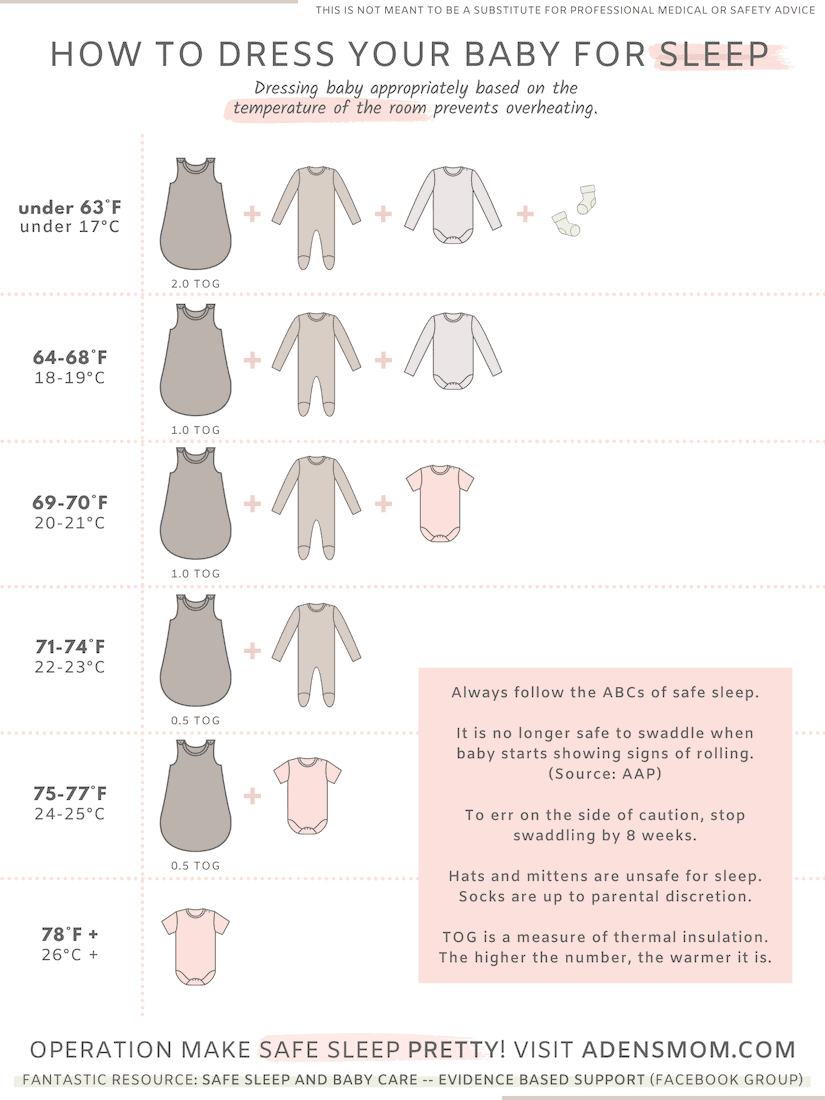
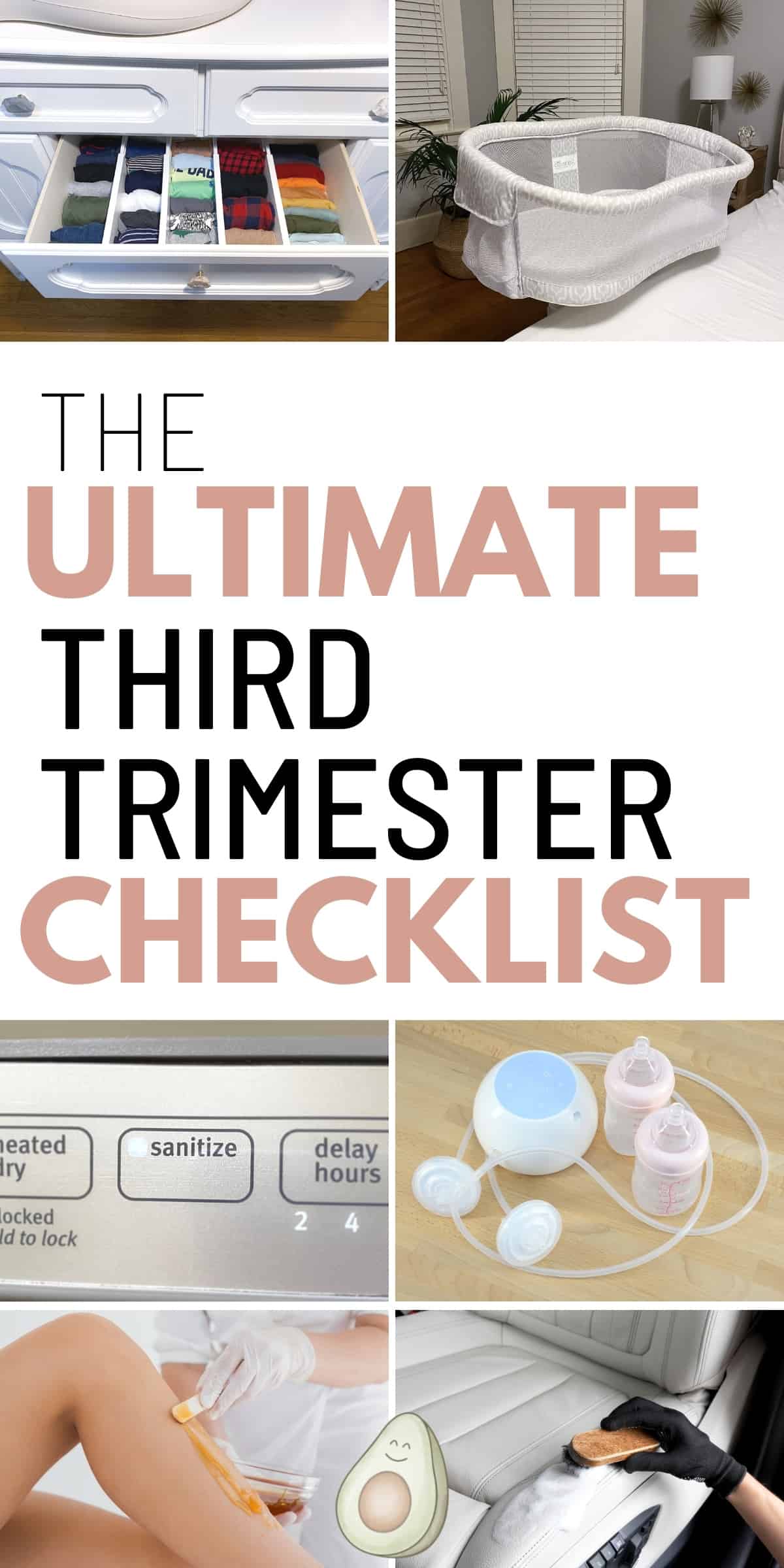
 Follow on Pinterest
Follow on Pinterest